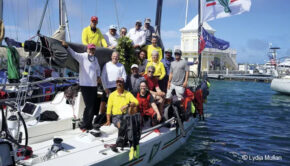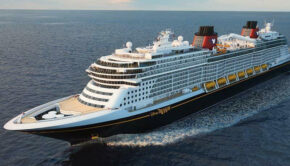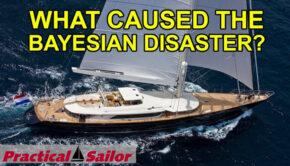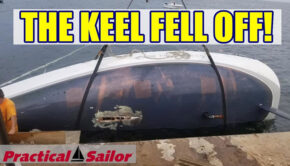Scuttling the boat in the Pacific Ocean
Published on August 9th, 2022
While offshore races from California to Hawaii progressively offer tropical conditions and endless surfing, the return trip can be unkind as reminded by a 2022 Pacific Cup entrant being rescued while on return delivery. The Pacific Ocean has long had anger issues as described in this retro story told by veteran West Coast racer Skip Allan who had to scuttle his custom Tom Wylie-designed 27-foot Wildflower:
When we sailed from San Francisco to Kauai in the 2008 Singlehanded TransPac in July, Wildflower and I were in the best shape of our careers. We arrived in Kauai in just over 16 days, winning our class and overall honors on corrected time.
However, even with the thorough preparation and planning, going to sea in a small boat is never a sure thing. After two weeks of cruising Hawaiian waters, we set sail August 13, solo, from Hanalei Bay back toward our homeport of Santa Cruz, CA, 2,200 miles as the albatross flies.
During the following two weeks, we sailed close-hauled due north 800 miles in the northeast tradewinds, then gradually curved 1,000 miles east, clockwise, over the top of the Pacific High, the expansive high-pressure system that dominates this part of the Pacific Ocean.
With less than 1,000 miles to go, I was tracking conditions ahead in “Gale Alley,” a notorious area of ocean between 34 and 42 degrees north, and 124 and 128 degrees west, which in June, July, and August produces the highest frequency of gales and seas in excess of 12 feet in the North Pacific.
Wildflower and I had crossed Gale Alley before. I knew we would be met by vigorous winds and seas generated by isobars compressed between a strong Pacific High and the low pressure of hot inland deserts and valleys of southern Oregon and California. These conditions can persist for days, sometimes even a week or more.
Generally, the forecast 30- to 40-knot northwesterly winds are less of a problem than the steep and breaking seas they create. The main risk for a small boat in a gale is capsize. – Full report









 We’ll keep your information safe.
We’ll keep your information safe.